Binance founder CZ recently conducted an experiment on his newly launched "Pay to Reach" platform—initially intended to filter effective communication, but it ended up being overwhelmed by an "Pay to Reach"
At first, he set the message fee at 0.04 BNB (approximately $24), but he received a flood of useless messages, such as: "Yo," "How was your dinner?" "Check out this meme coin," "Which CA?"... These left CZ helpless, prompting him to exclaim, "Please don’t waste your money like this."
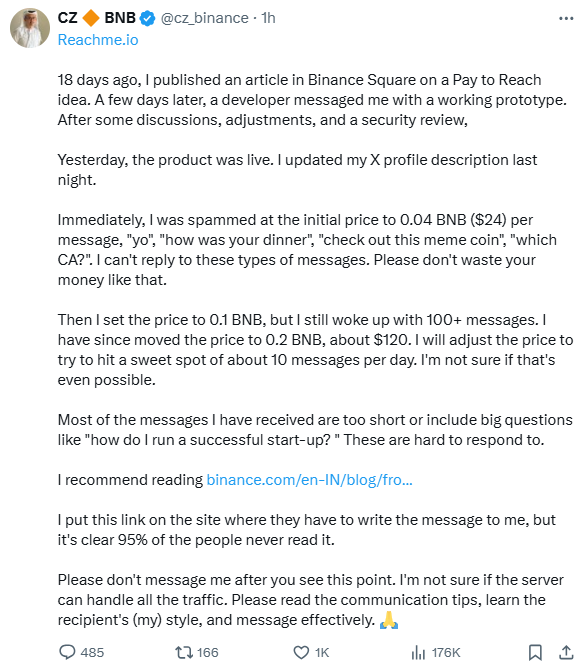
To reduce spam messages, CZ promptly increased the price to 0.1 BNB and went to bed happily.
The next morning, disaster struck—over 100 messages awaited his response!
This indicated that the price was still too low, and the filtering effect was inadequate.
CZ decided to double the price again to 0.2 BNB (around $120) in an attempt to limit his daily messages to 10. However, he was still unsure if this price was "safe" enough.
Yet another issue arose—most messages were still too simplistic or directly asked, "How can I successfully start a startup?"
This left CZ puzzled: How should he respond to such questions?
Where Did This “Pay to Reach Experiment” Originate?
Let’s rewind to March 8.
While relaxing over the weekend, CZ had a sudden flash of inspiration: Could a system be built to facilitate more efficient connections for serious individuals?
He realized that KOLs (Key Opinion Leaders) often receive an overwhelming number of private messages daily, and the open nature of social platforms leads to rampant spam.
Since existing tools fail to filter meaningful conversations, what if "sending messages" required payment, effectively tokenizing a KOL’s time?
Just a few days after proposing this idea, a developer approached CZ with a viable prototype.
After two weeks of refinement and security reviews, ReachMe officially launched.
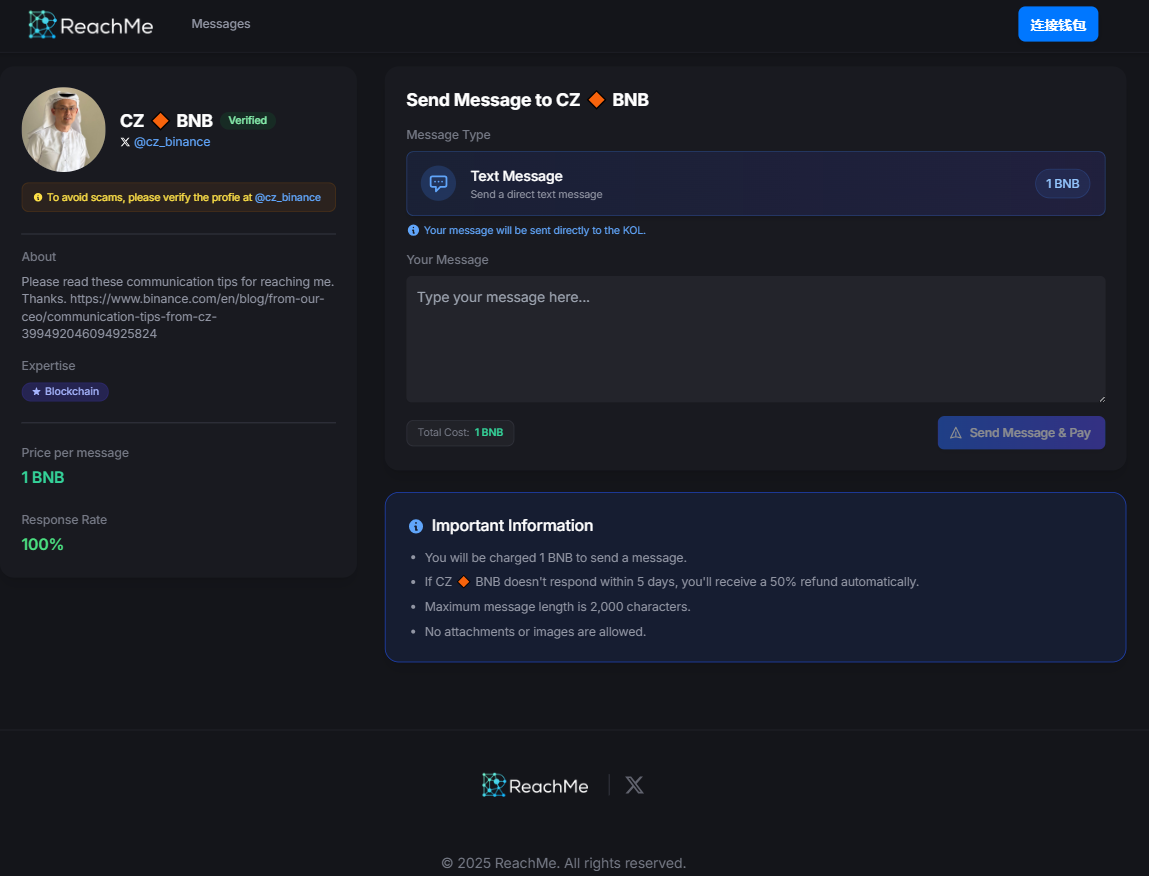
The Core Mechanism of This Paid Messaging System:
KOLs set a private messaging fee (e.g., 0.1 BNB).
The sender pays to send a message. If the KOL does not reply within five days, 50% is refunded to prevent abuse.
KOLs receive 150% of the initial fee, incentivizing serious responses.
Message rules:
Limited to 2,000 characters (about two pages).
No images or attachments allowed to prevent viruses or spam.
Senders can include contact details, but if the KOL chooses to communicate externally, their earnings decrease by 50%.
The platform takes a 10% commission, with the rest paid to the KOL.
Payments are settled in BNB/BSC, without requiring a new token.
After the launch, CZ quickly added the platform link to his X profile.

However, he soon discovered that despite setting an initial fee of 0.04 BNB (about $24), it wasn’t enough to deter useless messages.
So, he kept raising the price—from 0.04 BNB to 0.1 BNB, then from 0.1 BNB to 0.2 BNB—trying to find a balance where valuable messages could be filtered without setting the barrier too high.
Yet, message quality remained a problem.
CZ suddenly recalled that on November 8, 2019, he had written an article specifically advising people on how to message him properly.
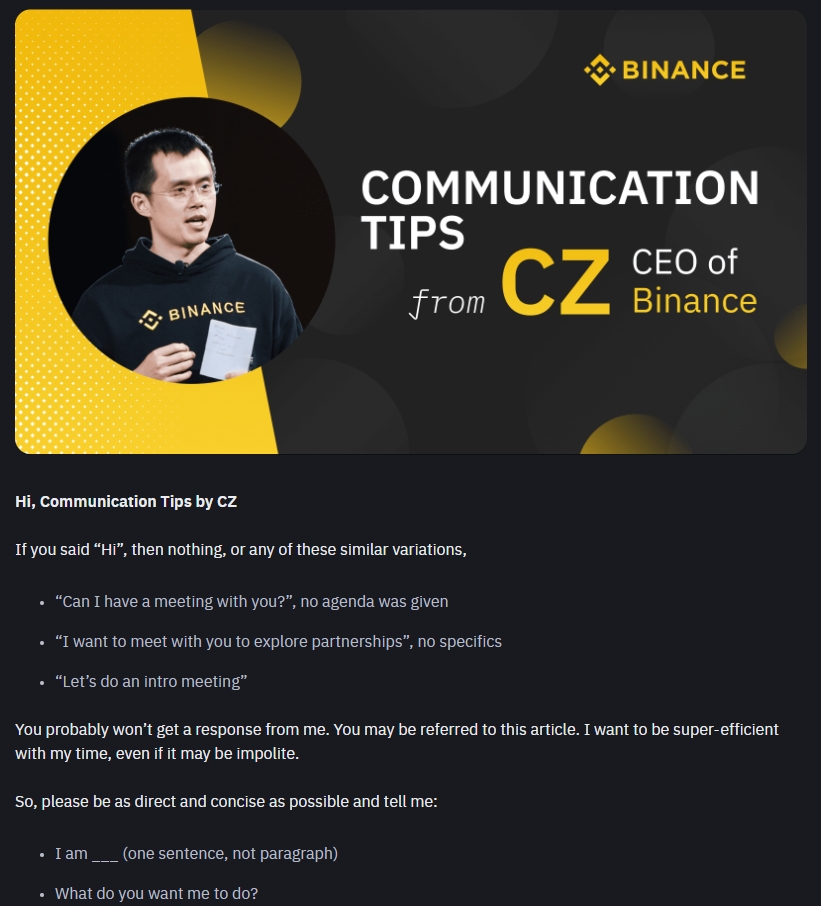
However, in reality, 95% of people had no idea the article even existed, let alone read it.
So, he once again urged everyone: "Please read my communication guide before deciding to send a message."
Finally, CZ humorously reminded everyone: "If you’ve finished reading my tweet, please don’t message me. I’m not sure if the server can handle that much traffic."
"Hope you’re not mad. Let’s communicate efficiently—cheers!"
Is This the Future Model for KOL Communication?
CZ’s experiment highlights an intriguing trend: How can KOLs effectively communicate on social media without being overwhelmed by spam?
The " Pay to Reach " model could be one possible future trend.
But how should pricing be set? How can effective communication be ensured? How can abuse be prevented? These questions still require further exploration.
Do you think Pay to Reach is a good idea? Will it become the new norm for KOLs, or is it just an interesting experiment?
Feel free to discuss in the comments.
Disclaimer:This article is for informational purposes only and does not constitute investment advice. The views expressed are solely those of the quoted authors and do not represent the stance of this company. Before making any investment decisions, readers are advised to conduct thorough research and risk assessment. This company is not responsible for any investment losses.












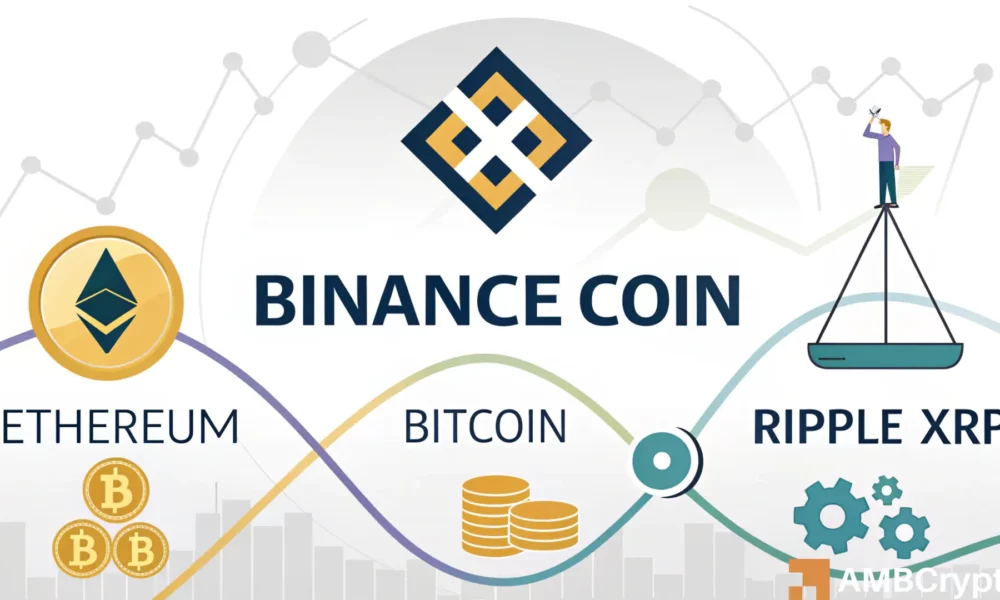

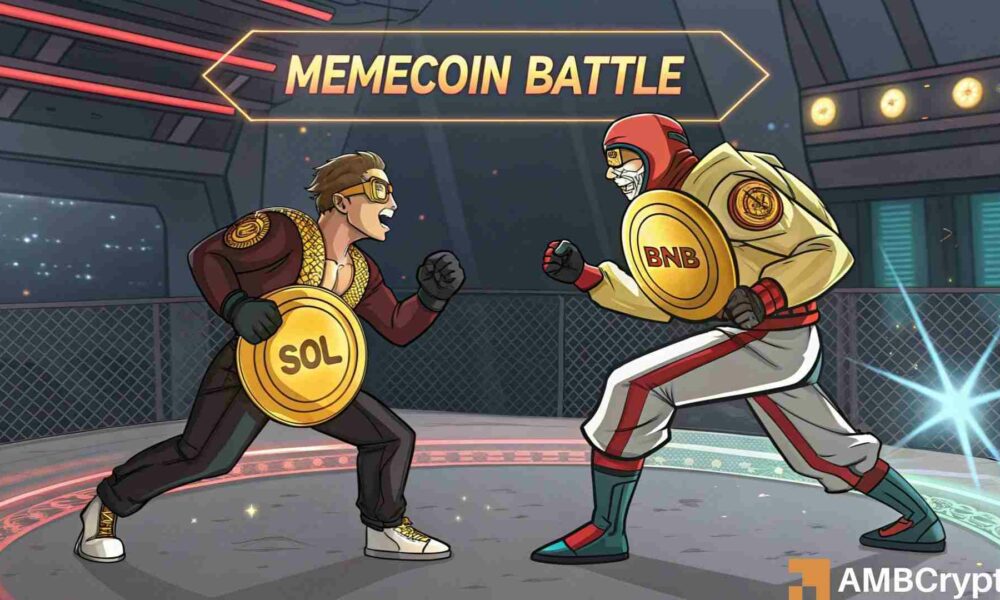

No comments yet